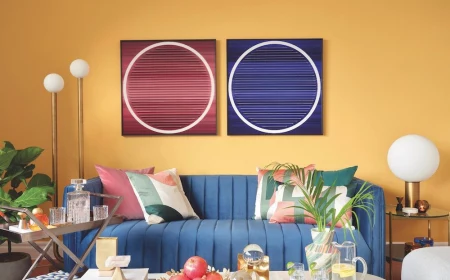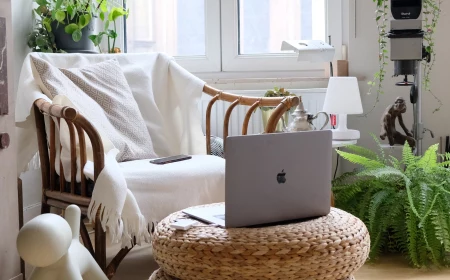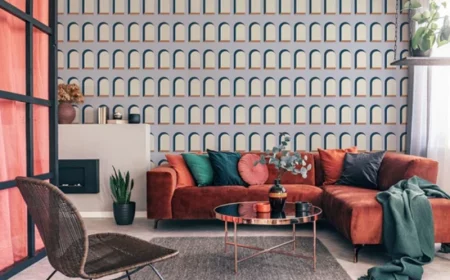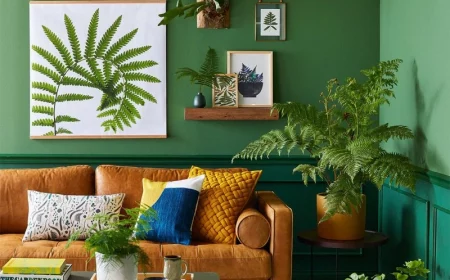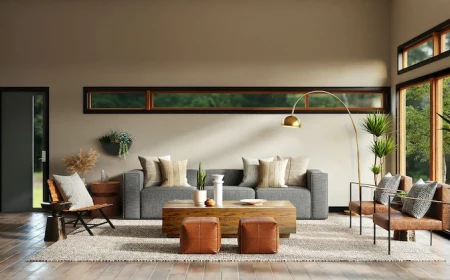Your Living Room Doesn’t Need a Sofa (No, Really)
I’ve been helping people figure out their living spaces for a long time, and I’ve walked into more rooms than I can count. Almost every single time, the first question is, “So… where should we put the couch?” And I get it. We’ve all been raised to believe that a living room without a sofa is like a kitchen without a stove. But I always ask my clients to hit the pause button and think for a minute. What if the best seating for your room… isn’t a couch at all?
In this article
- First Things First: Understand Your Room’s Job
- 1. The Chaise Lounge: Elegant and Purposeful
- 2. A Group of Armchairs: The Ultimate Conversation Hub
- 3. The Daybed: A Versatile, Hardworking Hybrid
- 4. Benches and Ottomans: Low-Profile and Modular
- 5. Built-In Seating: The Ultimate Custom Solution
- So, How Do You Choose?
- Inspirational Gallery with Photos
This isn’t about being different just to be different. It’s about creating a space that actually works for how you live. The flow of a room, its main job, and its size should be the real bosses here. Over the years, I’ve learned to see seating as hardworking equipment, not just pretty decoration. It has to be comfy, it has to be tough, and it has to be the right fit for the space. So let’s look at the alternatives. We’ll go way beyond just what they look like and talk about what makes a piece of furniture truly last—things like frame construction, foam density, and fabric durability. This is the stuff that separates furniture you’ll love for a decade from something that’s headed for the curb in two years.
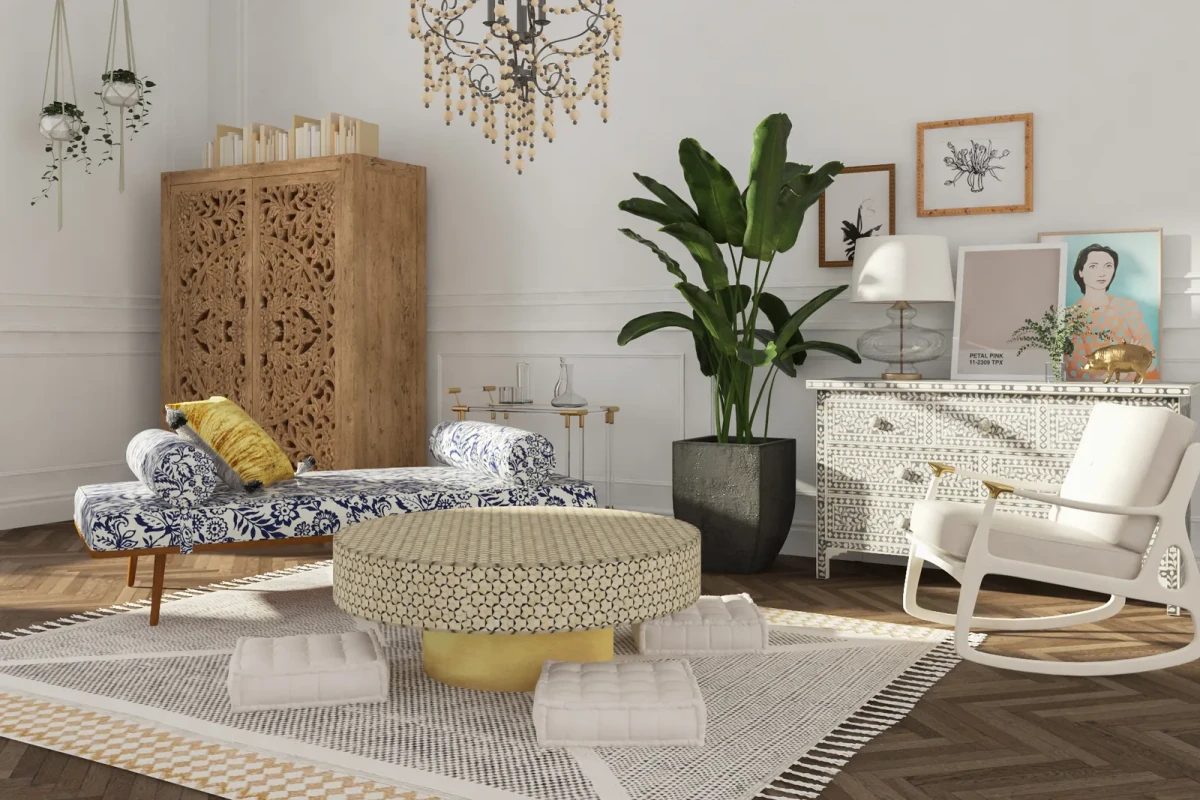
First Things First: Understand Your Room’s Job
Before you even think about shopping, you have to get to know your space. Seriously, this is the most important step and the foundation for every other decision. I have a super simple method I use with every single client, and all you need is a tape measure and some blue painter’s tape.
First, measure the room. Then, figure out the traffic patterns. Where do people naturally walk to get from the hallway to the window, or from one door to another? You have to keep these paths clear. A classic mistake is placing furniture right in the way, forcing everyone to do that awkward little sidestep-and-squeeze maneuver.
Quick tip: As a rule of thumb, aim for a clear path that’s at least 30 to 36 inches wide. Anything less than that and the space will feel cramped and frustrating, trust me.
Once you’ve taped off your walkways, think about function. What are you really doing in here? Binge-watching shows with the family? Hosting parties where people actually talk to each other? Curling up alone with a good book? Each of these jobs calls for a different kind of seating. A deep, squishy sectional is amazing for movie night, but it can be really awkward for a party where guests are stuck in a line. For that, a circle of chairs is a million times better. Use that painter’s tape to mark out the footprint of potential furniture on the floor. It’s a simple trick, but it helps you feel the scale of a piece before you spend a dime. It has saved my clients from so many expensive headaches.
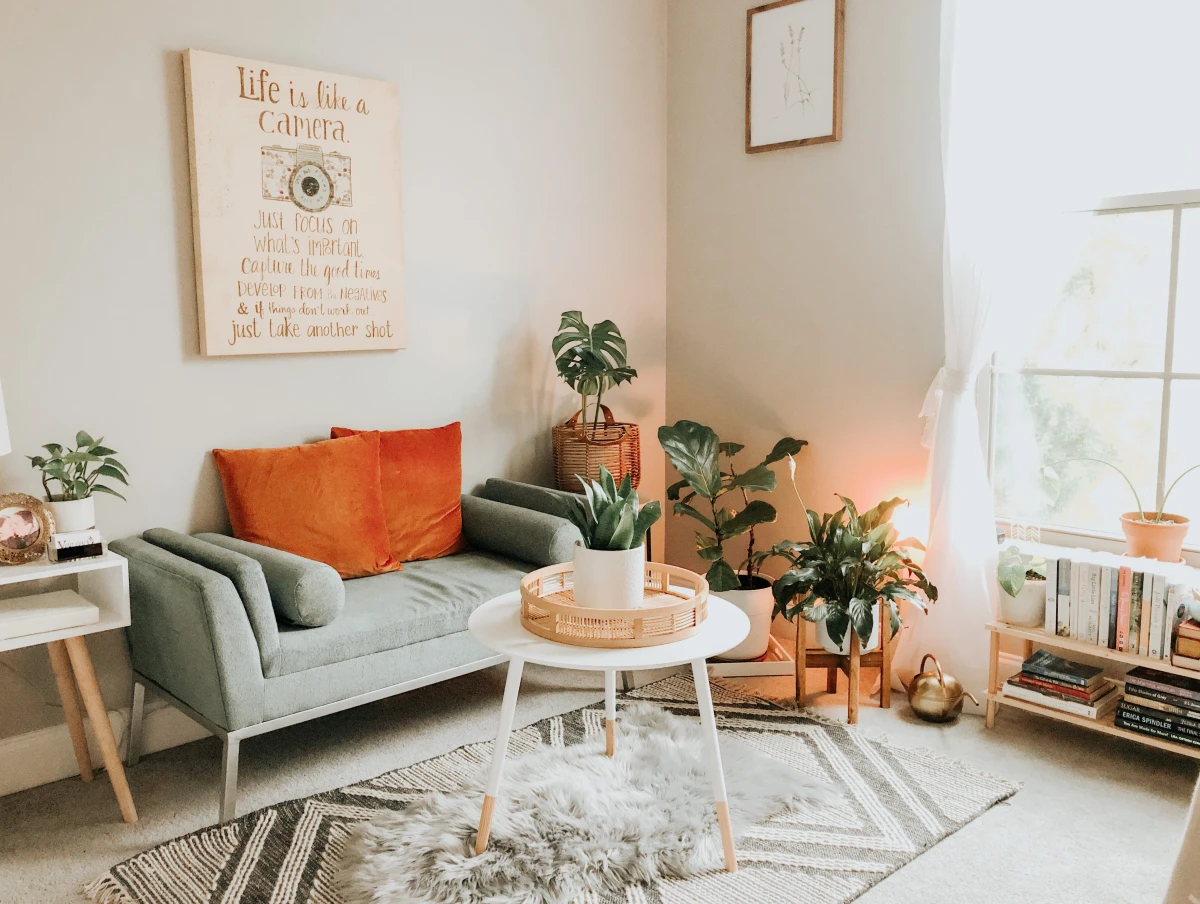
1. The Chaise Lounge: Elegant and Purposeful
A chaise lounge just oozes elegance, doesn’t it? It has this romantic, almost cinematic vibe. But it’s also a surprisingly practical piece of furniture when you use it right. It’s basically a sofa built for one, specifically designed for reclining. That makes it absolutely perfect for a dedicated reading nook or a quiet corner where you can unplug.
What to Look For in a Chaise
The real quality of a chaise, like any good upholstered furniture, is hidden on the inside. When I’m checking one out, I’m not just looking at the pretty fabric. I’m investigating the frame. A solid frame is made from kiln-dried hardwood. That kiln-drying process pulls moisture out of the wood so it won’t warp or crack down the road. The joints should be corner-blocked, glued, and screwed together for a rigid frame that won’t get wobbly.
Here’s a little test the pros use: Try to lift one front leg of the chaise just a couple of inches off the ground. If the other front leg comes up almost immediately, the frame is solid. If the frame twists and the other leg stays put, walk away. That piece won’t last.
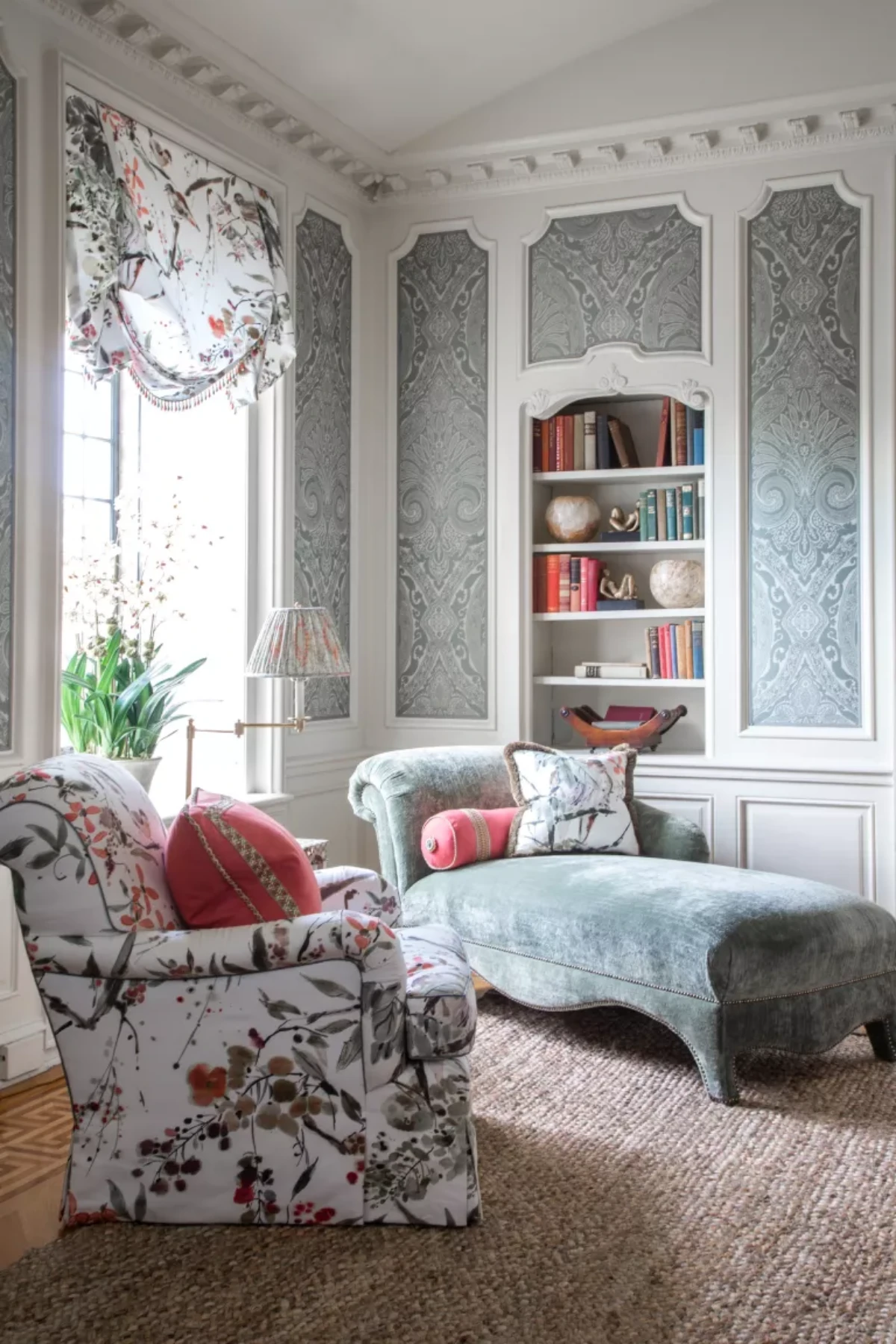
Next up is the suspension—the springs or webbing that hold up the cushion. The absolute best is an eight-way hand-tied spring system. It’s a very hands-on process that provides incredible, even support, but honestly, it’s very expensive. A more common and still great option is sinuous springs, which are S-shaped wires running front to back. They’re durable and comfortable. Just try to avoid pieces that only use webbing for support, as it can stretch and sag over time.
Where It Works Best
A chaise is a lifesaver in a long, narrow room where a full sofa would feel like a behemoth. It’s also a fantastic addition to a master bedroom or a home office, creating a personal escape zone. But let’s be real, it’s not a great choice for your only seating in a main living room. It’s built for personal comfort, not a social gathering. Price-wise, you can find decent ones for around $500, with high-end versions easily hitting $2,000 or more.

2. A Group of Armchairs: The Ultimate Conversation Hub
Okay, this is my favorite sofa alternative for so many spaces: replacing a single sofa with two, three, or even four armchairs. It creates such a flexible and wonderfully sociable vibe. A sofa forces everyone into a straight line, but a circle of chairs invites real conversation. People can actually turn and make eye contact! It feels dynamic and welcoming, especially if you love to have people over.
Choosing and Arranging Your Chairs
Scale is absolutely everything here. You can’t just cram four massive club chairs into a tiny room and call it a day. From my experience, that’s a recipe for disaster. I once had a client who fell in love with these huge, oversized chairs online. When they arrived, they completely devoured her living room—we could barely walk around them! It was an expensive lesson in measuring first.
Instead, think about different arrangements and chair types:
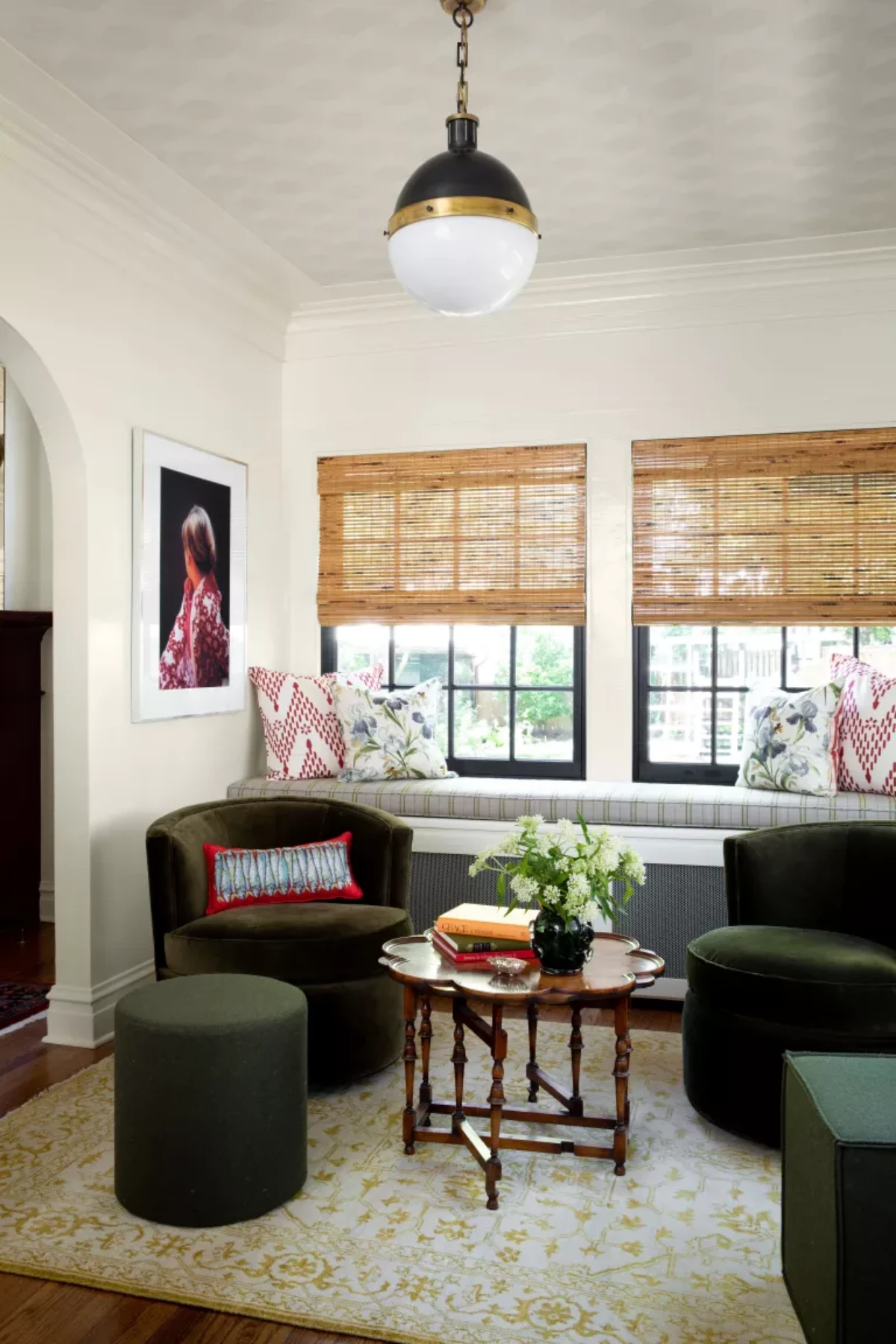
- The Face-to-Face: Two chairs face two other chairs with a coffee table in between. This is classic, formal, and fantastic for creating a balanced look.
- The L-Shape: Arrange three or four chairs in a corner to create a cozy, defined nook in a larger, open-concept space.
- The Classic Circle: The best for pure conversation. Float four chairs around a central round coffee table or ottoman.
To make it work, consider chairs with a smaller footprint. Slipper chairs are armless and have a low profile, making them perfect for tight spots. Swivel chairs are another brilliant choice, especially in an open-plan home, since you can easily pivot from the conversation to the fireplace or the TV.
Let’s Talk Durability and Cost
When you have multiple chairs, the fabric choice is critical. This is where you want to know about “double rubs.” It’s a test that mimics the wear and tear of someone sitting down and getting up. A fabric rated for 15,000 double rubs is fine for general home use. But if you have kids, pets, or this is your main seating, I always recommend looking for a rating of 30,000 or higher. Also, always check the cleaning code! It’s usually on a tag under a cushion. ‘W’ is for water, ‘S’ is for a solvent cleaner, and ‘X’ means vacuum only. I had a client who tried to spot-clean a gorgeous ‘S’-code chair with water, and it left a permanent ring that ruined the fabric. A simple code can save you so much heartache.
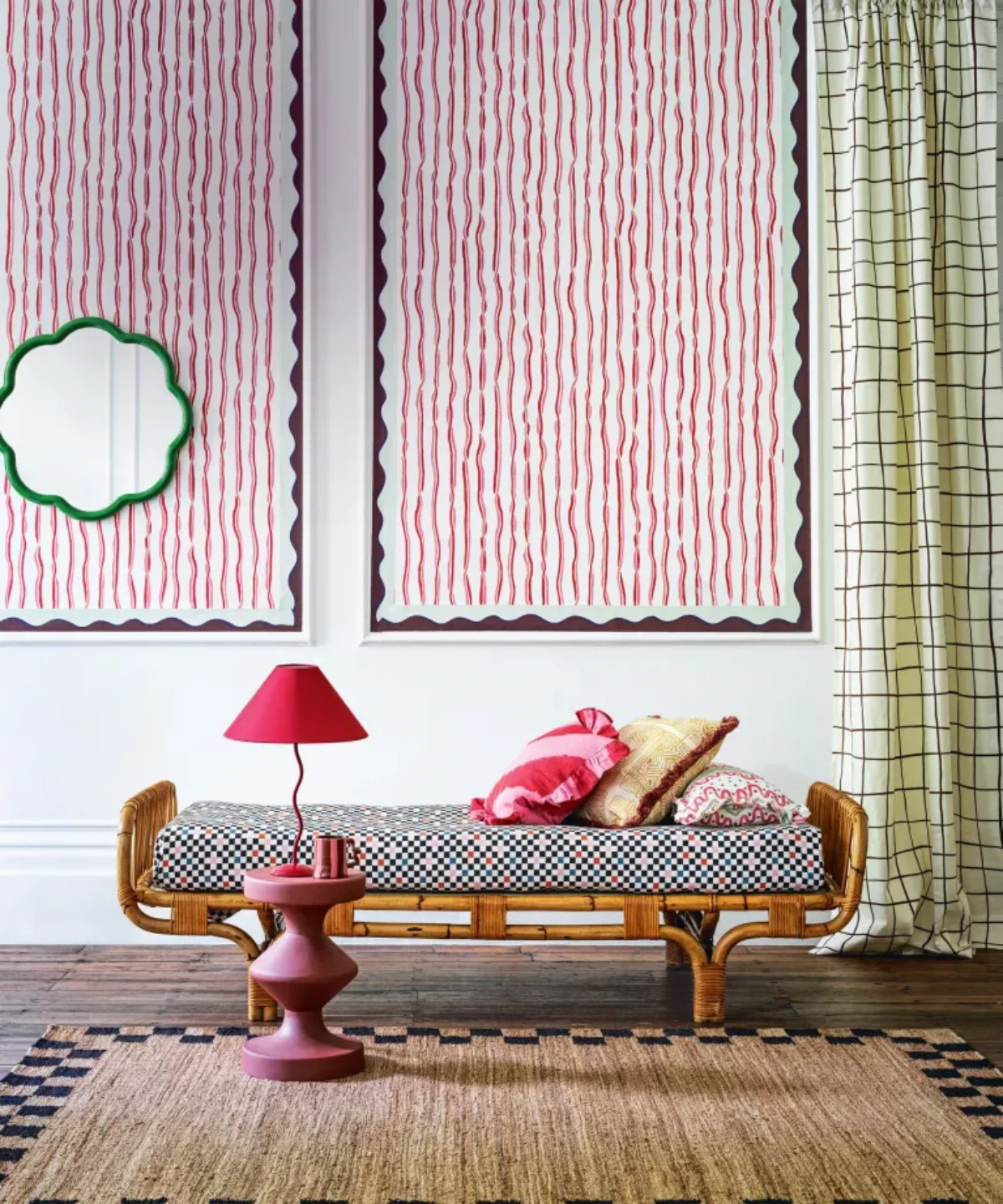
Oh yeah, and be honest with your budget. Four high-quality armchairs can easily cost more than one good sofa. If a well-made chair costs between $400 and $1,200, you’re looking at a total investment of $1,600 to $4,800 or more. The upside? The flexibility is priceless, and you can build your collection over time.
3. The Daybed: A Versatile, Hardworking Hybrid
A daybed is such a clever piece of furniture—it’s part bed, part sofa. This makes it a no-brainer for multi-use spaces like a home office that needs to double as a guest room, or a small studio apartment where every square inch counts. By day it’s a sofa; by night, it’s a bed.
Making It Work as a Sofa
The secret to making a daybed feel like a proper sofa is all in the styling. A bare mattress just looks like… well, a bed. To transform it, you need to fake a backrest and arms. I use big, firm bolster pillows along the back and at the sides, then layer in a ton of throw pillows in different sizes and textures. This adds depth and makes it much more comfortable for sitting.
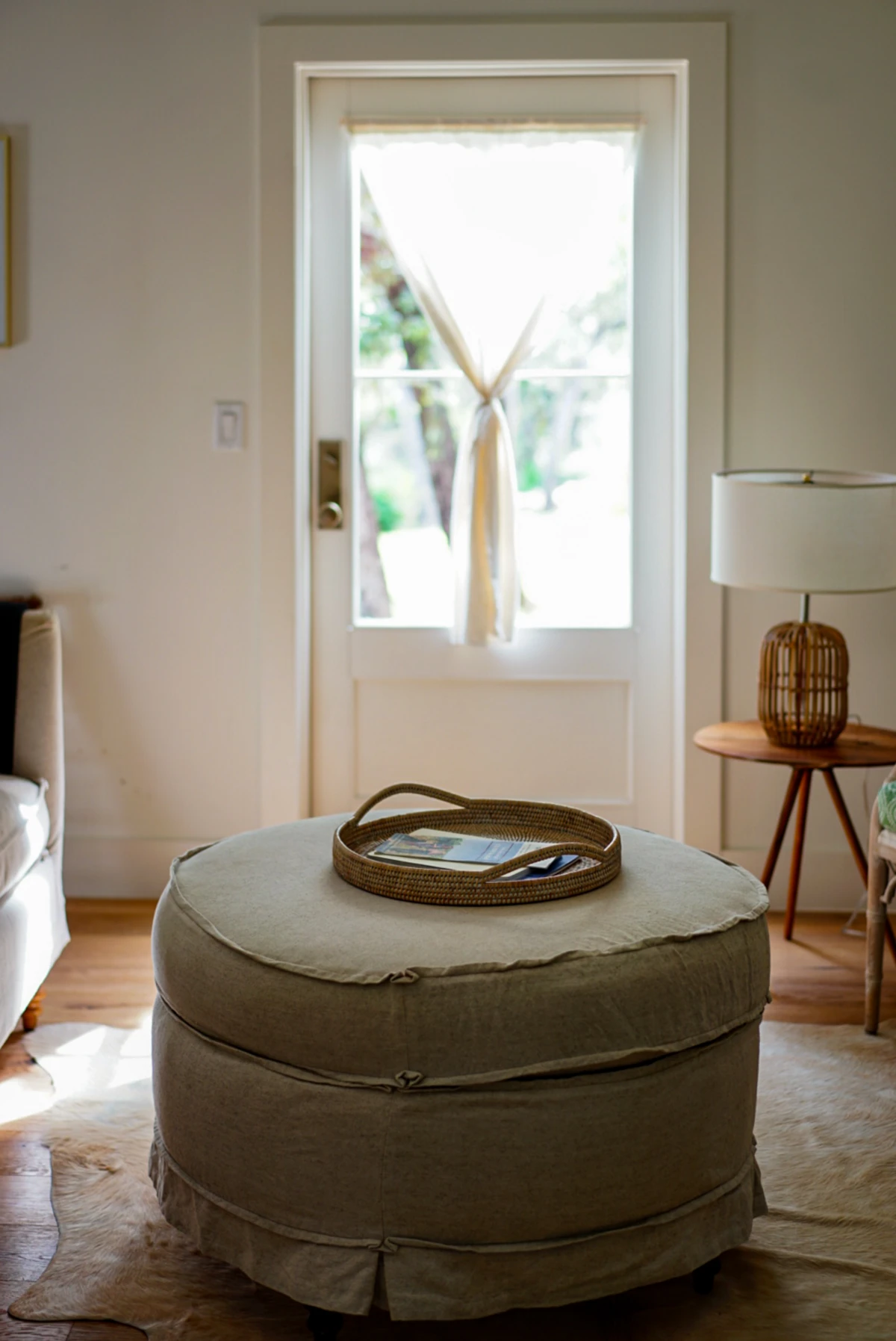
The mattress is also key. A super-soft, plushy mattress will feel like a black hole when you try to sit on it. I recommend a firm or medium-firm mattress, either a hybrid or all-foam model. An 8- to 10-inch thickness is usually the sweet spot; any thicker and the seat height gets awkwardly tall. Be prepared to spend between $800 and $2,000 for a quality frame and mattress combo, which is pretty comparable to a mid-range sofa.
The Honest Downsides
Let’s be transparent here: a daybed is a compromise. It’s rarely as comfortable for hours of sitting as a dedicated sofa with a properly angled back. The back support comes entirely from pillows that you’ll have to fluff and rearrange constantly. It also requires a bit of daily effort to transition it from a bed back to a sofa. It’s a fantastic problem-solver for small, flexible spaces, but it’s probably not the best pick for a primary family room where you lounge every single evening.
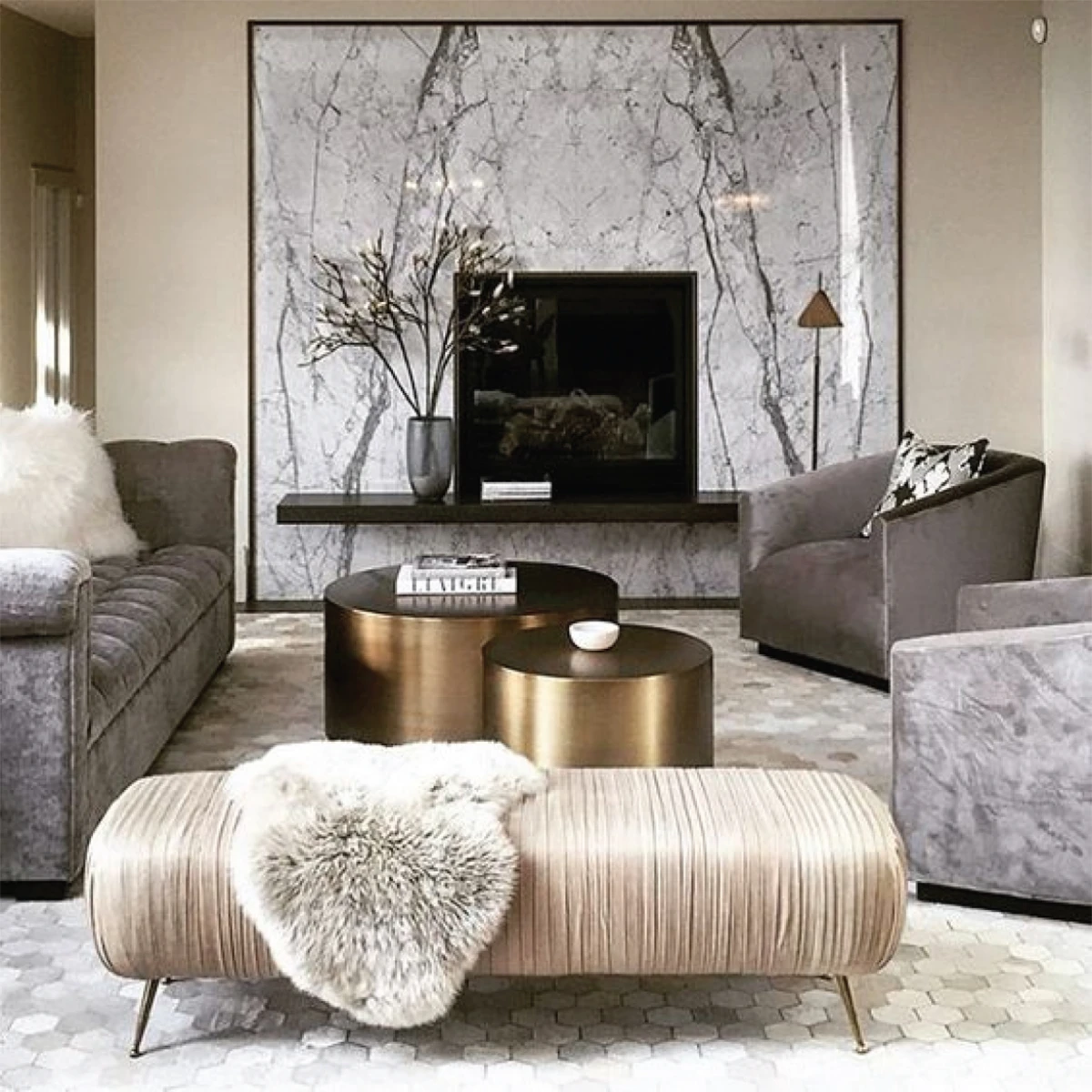
4. Benches and Ottomans: Low-Profile and Modular
Sometimes, the best seating is the kind that doesn’t block your view or chop up the room. Upholstered benches and large ottomans are perfect for this. They offer a place to perch without creating a huge visual barrier, which can make a space feel way bigger and more open.
An upholstered bench is a surprisingly versatile workhorse. I love placing one under a big window to provide a spot to enjoy the view without blocking the light. In an open floor plan, a backless bench can act as a subtle divider between the living and dining areas. For a truly modular and modern setup, try grouping two or four smaller square ottomans together. They can work as one big coffee table (just add a tray!), or you can pull them apart for individual seats when company comes over. When picking an ottoman for seating, you need very firm, high-resilience (HR) foam. Otherwise, it will just collapse under you. Look for durable, easy-to-clean fabrics, since ottomans tend to get a lot of abuse from feet, food, and pets.
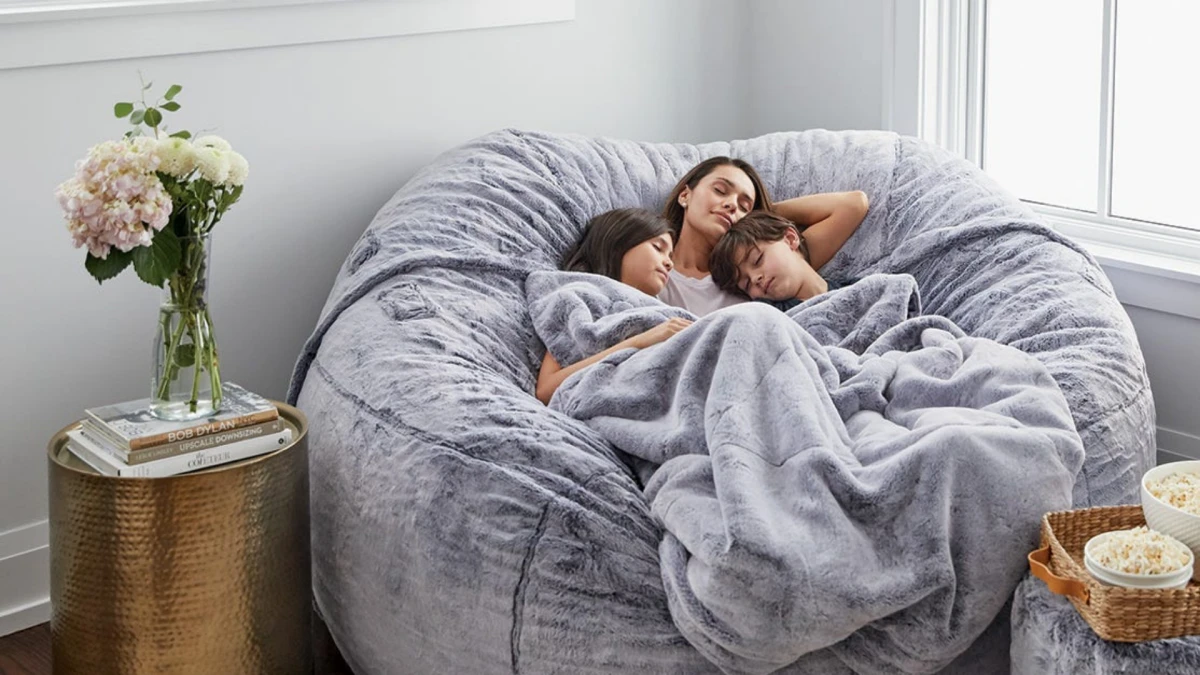
5. Built-In Seating: The Ultimate Custom Solution
For a truly seamless, integrated look, nothing beats custom built-in seating like a window seat or a banquette. But heads up: this isn’t a simple furniture purchase. It’s a mini construction project that requires careful planning and hiring pros.
You’ll likely be working with a cabinet maker or a finish carpenter to build the frame. You also have to think about things like electrical outlets—building codes often require them, so you’ll need a licensed electrician to wire them into the base of the banquette. Then, a professional upholsterer will need to create custom-fit cushions. This is a real investment. Depending on the size, materials, and local labor costs, a custom banquette can range anywhere from $2,500 to $7,000 and up. The biggest benefit is how incredibly efficient it is with space, often providing hidden storage underneath. But it’s also permanent. You can’t move it or change your mind. I only recommend this route if you’re absolutely certain about the long-term layout of your home.
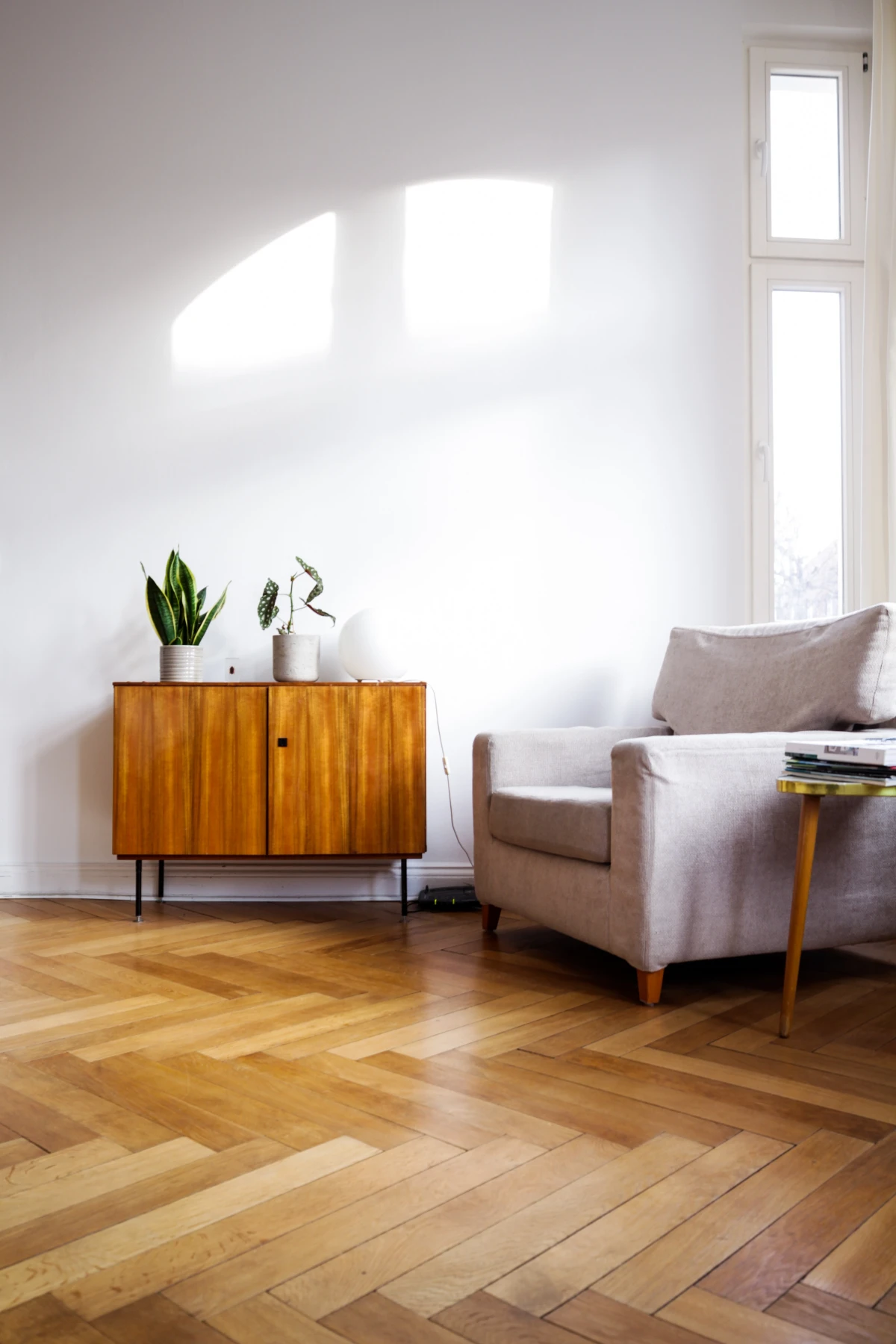
So, How Do You Choose?
Picking seating for your living room is a huge decision that affects your daily comfort. Don’t just default to a sofa because it’s the “normal” thing to do. Take a moment to really analyze your space and your life.
To put it all in perspective:
- For conversation and flexibility, a group of armchairs is your best bet.
- For a multi-use guest space, a daybed is a brilliant problem-solver.
- For a personal relaxation spot, nothing beats the elegance of a chaise.
- For saving space and adding storage, a custom built-in is unbeatable but a major commitment.
- For open sightlines and modularity, benches and ottomans are your low-profile heroes.
And look beyond the style. Ask about the guts of the furniture. A well-made piece is an investment that will pay you back in comfort and durability for years. A cheap piece will just become a headache and, eventually, landfill. Be patient. If you’re not sure, live in the empty room for a bit. Let the space tell you what it really needs. The perfect solution is the one that fits your home, your budget, and your life—not just the one you saw in a catalog.
Inspirational Gallery with Photos
The Art of the Mix: Don’t feel obligated to buy a matching set of armchairs. The most dynamic, personality-filled rooms often feature a curated collection. The trick to avoiding a chaotic look is to establish a unifying element. This could be a consistent color palette (shades of green and blue), a shared material (like walnut wood frames on different chair styles), or a similar design era (such as Mid-Century Modern). This approach creates a space that feels collected over time, not bought in a day.
- A small table next to each seating group is non-negotiable. Guests need a place to set down a drink or a phone.
- Ensure every chair has access to good lighting, whether it’s a shared floor lamp or a dedicated sconce.
- A large, central area rug acts as the anchor, visually connecting disparate pieces of furniture into a cohesive whole.
But where will my overnight guests sleep without a sofa bed?
This is the number one concern, but the solutions are often more stylish and comfortable than a lumpy pull-out. Consider a sleek daybed tucked against a wall, like the ‘Cada’ from Article, which serves as elegant seating by day and a twin bed by night. Alternatively, a high-quality, self-inflating air mattress stored in a closet is often more comfortable and can be placed anywhere, offering more flexibility than a fixed sofa bed.
According to the principles of proxemics, the ‘social distance’ for conversation among acquaintances is 4 to 12 feet.
A traditional sofa forces people who don’t know each other well into an intimate side-by-side arrangement, which can be awkward. A circular or semi-circular arrangement of armchairs, however, naturally places individuals within this comfortable conversational range, fostering better interaction and a more welcoming atmosphere for hosting.
Daybed: Essentially a twin bed with a sophisticated frame, often featuring a backrest on one long side. It’s perfect for lounging, napping, and easily doubles as guest sleeping. It’s more formal and structured.
Chaise Lounge: An upholstered chair with its seat elongated to support the legs. It’s designed purely for one person to recline in comfort. Think of it as the ultimate reading or relaxing spot.
For true seating versatility and guest-readiness, the daybed is the more practical choice in a sofa-less scheme.
- Creates multiple zones within one room.
- Makes the space feel larger and more open.
- Allows for effortless deep cleaning underneath furniture.
The secret? Swapping a single, bulky sofa for two elegant chaise lounges. Placing them symmetrically, either facing each other over a coffee table or parallel to a fireplace, defines the space with architectural grace while offering luxurious comfort.
When you forgo a large sofa, you have an opportunity to invest in a true design icon that can serve as the room’s focal point. The key is sculptural form: Look to the enveloping comfort of Eero Saarinen’s Womb Chair for Knoll or the timeless elegance of the Eames Lounge Chair and Ottoman. These aren’t just places to sit; they are functional sculptures that elevate the entire room, making a powerful statement about your appreciation for design and comfort.
The waiting room effect is a real risk. To avoid it, break formal symmetry. Instead of four identical chairs in a perfect square, try creating two distinct pairs. For example, place two comfortable, upholstered armchairs facing a fireplace, and then create a separate, lighter grouping near a window with two slipper chairs made of rattan or woven leather. This creates different zones for different moods and makes the room feel more organic and inviting.
Over 30% of living room seating is purchased to fill a space, not to fit a specific lifestyle need.
This statistic highlights a common decorating pitfall. Before buying anything, honestly assess your daily habits. If your evenings are spent reading alone, one perfect armchair with an ottoman and a great lamp is a better investment than a three-seater sofa. If you host lively game nights, a cluster of movable poufs and floor cushions offers more flexibility than a rigid sectional.
For an intimate and engaging living space, nothing beats a conversation circle. Start by choosing four chairs that are similar in scale, even if their styles differ. Arrange them in a loose circle, ensuring there’s about 30 inches of space between them for easy movement. The ideal distance across the circle is 8-10 feet, close enough for easy conversation without shouting. Anchor the setting with a round coffee table or ottoman in the center to complete the welcoming arrangement.

